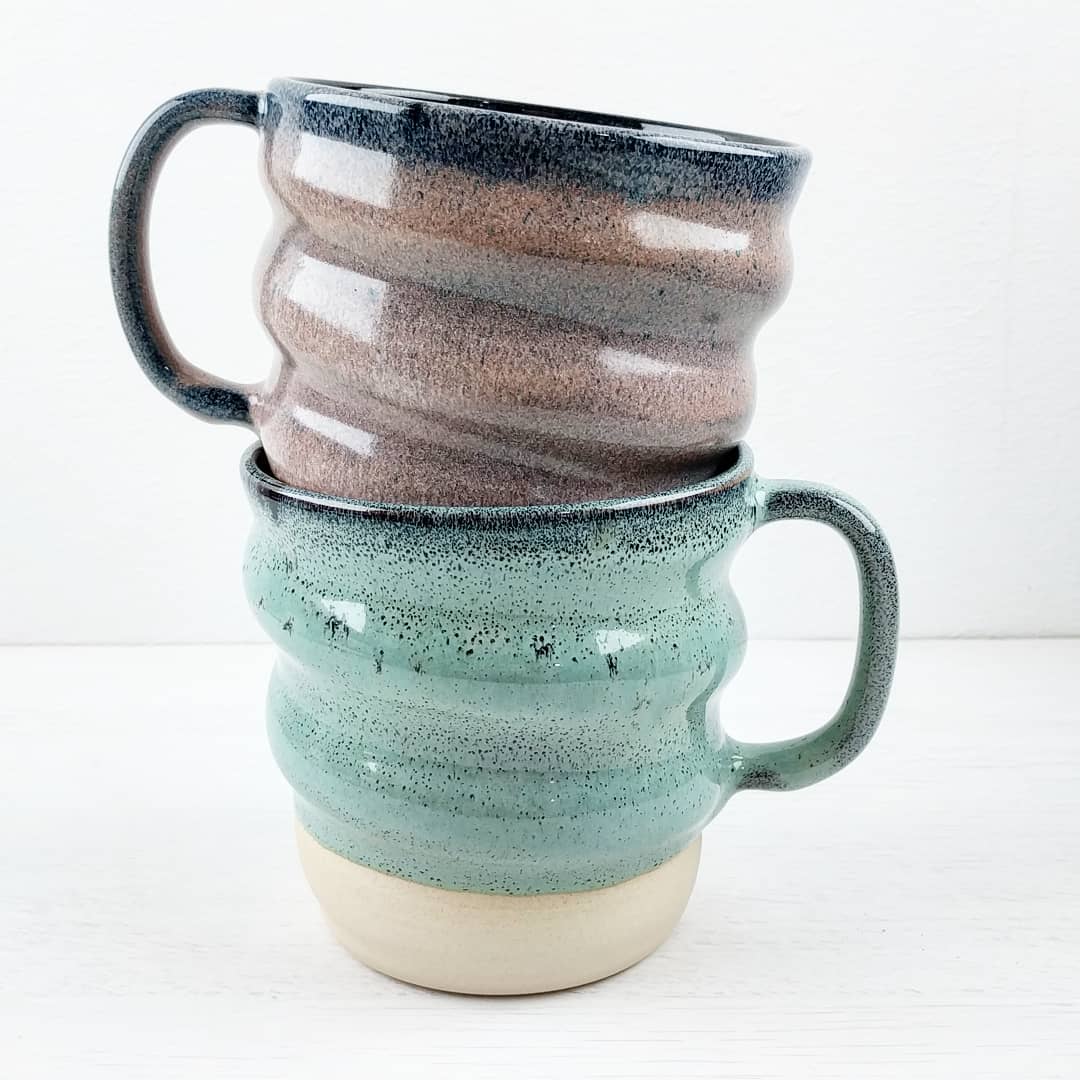How to make a simple tool to act as a guide for the holes for a teapot spout

How to make a simple tool to act as a guide for the holes for a teapot spout
My mugs are microwave safe, which means you can use them to make microwave mug cakes. It's not something I do often but I am partial to a recipe using Creme/Caramel Eggs, so this time of year is perfect to give it a go.
Social media is an incredible tool if you want to become a self employed creative. It allows you to showcase your work, reach and interact with your audience, and sell directly. For free. With a potential audience of millions.
Mindset is important in both pottery and self employment, it can be the difference between thriving and burning out.
Doing pottery full time doesn't mean all your time is spent making pots. Far from it.
We don't talk honestly about money often enough. It's important and universal, and we should be able to discuss it as freely as any other aspect of the process.
The Foot Trimming Tool is a really easy way to add a shaped foot to a piece.
There are some glaze ingredients that are volatile during a firing, even in a cone 5 electric kiln, and will evaporate and travel around the kiln. These pieces make use of that, with a glaze where the volatile colourant is removed from the recipe and placed nearby in the kiln to give a flash of colour during the firing.
The Nautilus pattern is a very simple process, created by stamping a pattern in thick slip while the piece turns slowly. It is an interesting pattern on its own, but also provides a textured surface for glazes to flow over.
The Drippy Slippy pieces came about from a desire to replicate the glorious drippiness of some glazes, but in the clay itself.
Slip is just another name for liquid clay. You can buy it ready made or mix it from powdered ingredients, but the simplest way to make it is to use the dried clay leftovers from trimming pots. The process really couldn't be much simpler.
It's always hard to know what to get someone for Christmas, but the good news is there's no shortage of options when buying for a potter.
Having a shaped foot on a piece has many advantages, practically as well as aesthetically. The main disadvantage is the extra time it can take to trim one, especially when you're making many copies of a simple form. This simple tool allows you to add a consistent shaped foot to a piece at the same time as undercutting the base, so doesn't even add an extra step to the process.
The technique to add the Swirly pattern is incredibly simple, but there are a few tricks to make it easier.
The Pebble pattern is produced by contrasting glazes mixing and flowing over a stamped design in the clay. It's a very simple process that can easily be modified and applied to a wide range of pieces